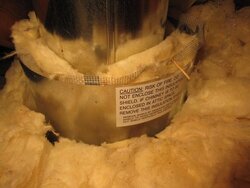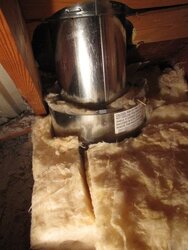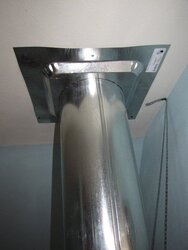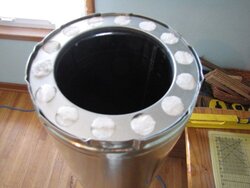My stove was just installed and I had them run a new chimney pipe for it. The installer said I could stuff some fiberglass insulation down inside the insulation guard, as you can see in the picture. He reasoned that the insulated chimney pipe itself was insulated with fiberglass, so this was no different.
After he left, I got to wondering. What would the point of the insulation guard be if it was ok to insulate inside of it?
The reason the installer suggested putting the fiberglass inside the guard was to provide some air blockage between the heated living space and unheated attic. If I do not stuff fiberglass inside the insulation guard, heated air will easily move past the metal plate on the inside ceiling and up into the attic.
What is the best way to handle this? Is the fiberglass inside the insulation guard ok? Thanks!
After he left, I got to wondering. What would the point of the insulation guard be if it was ok to insulate inside of it?
The reason the installer suggested putting the fiberglass inside the guard was to provide some air blockage between the heated living space and unheated attic. If I do not stuff fiberglass inside the insulation guard, heated air will easily move past the metal plate on the inside ceiling and up into the attic.
What is the best way to handle this? Is the fiberglass inside the insulation guard ok? Thanks!






